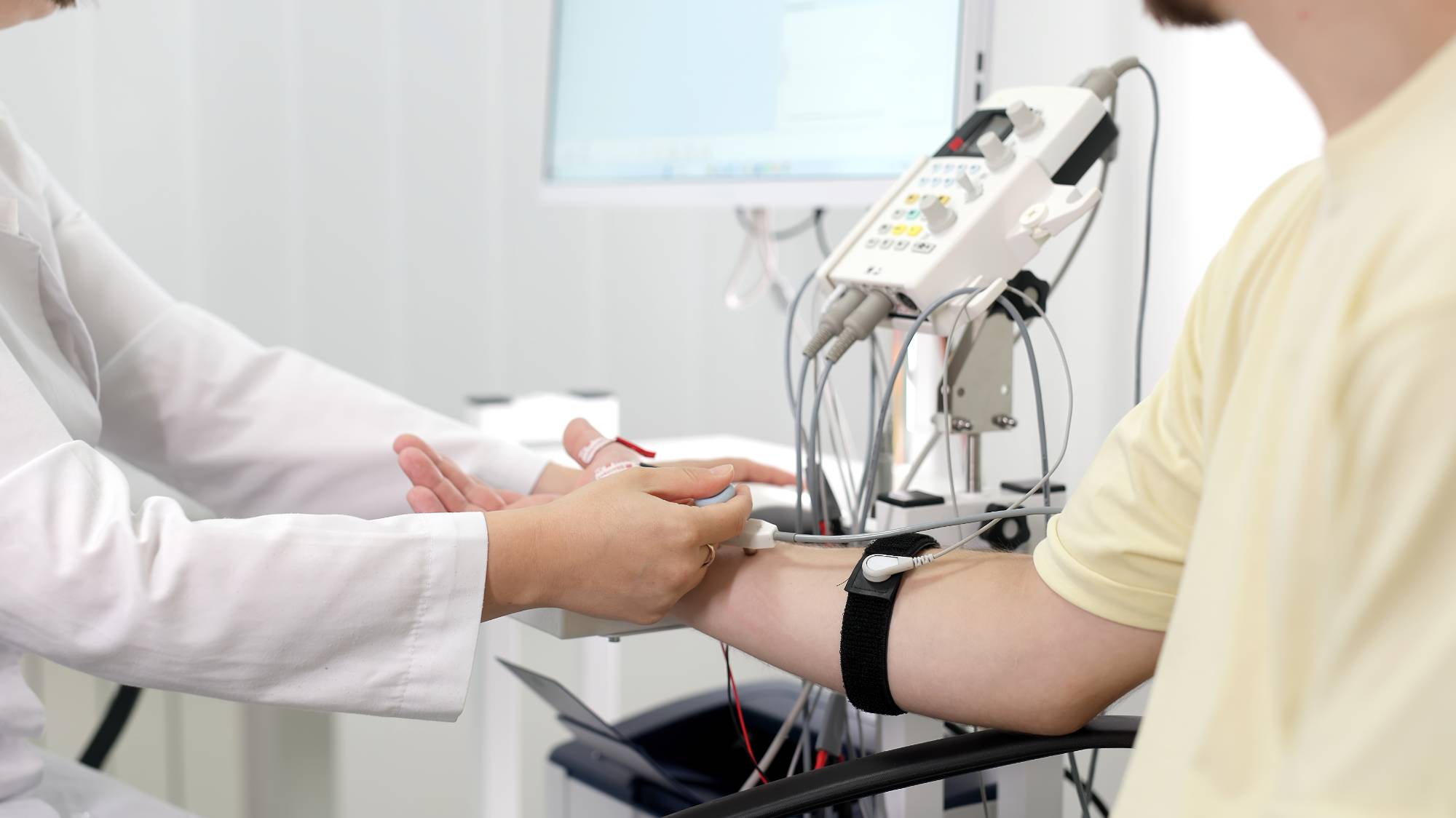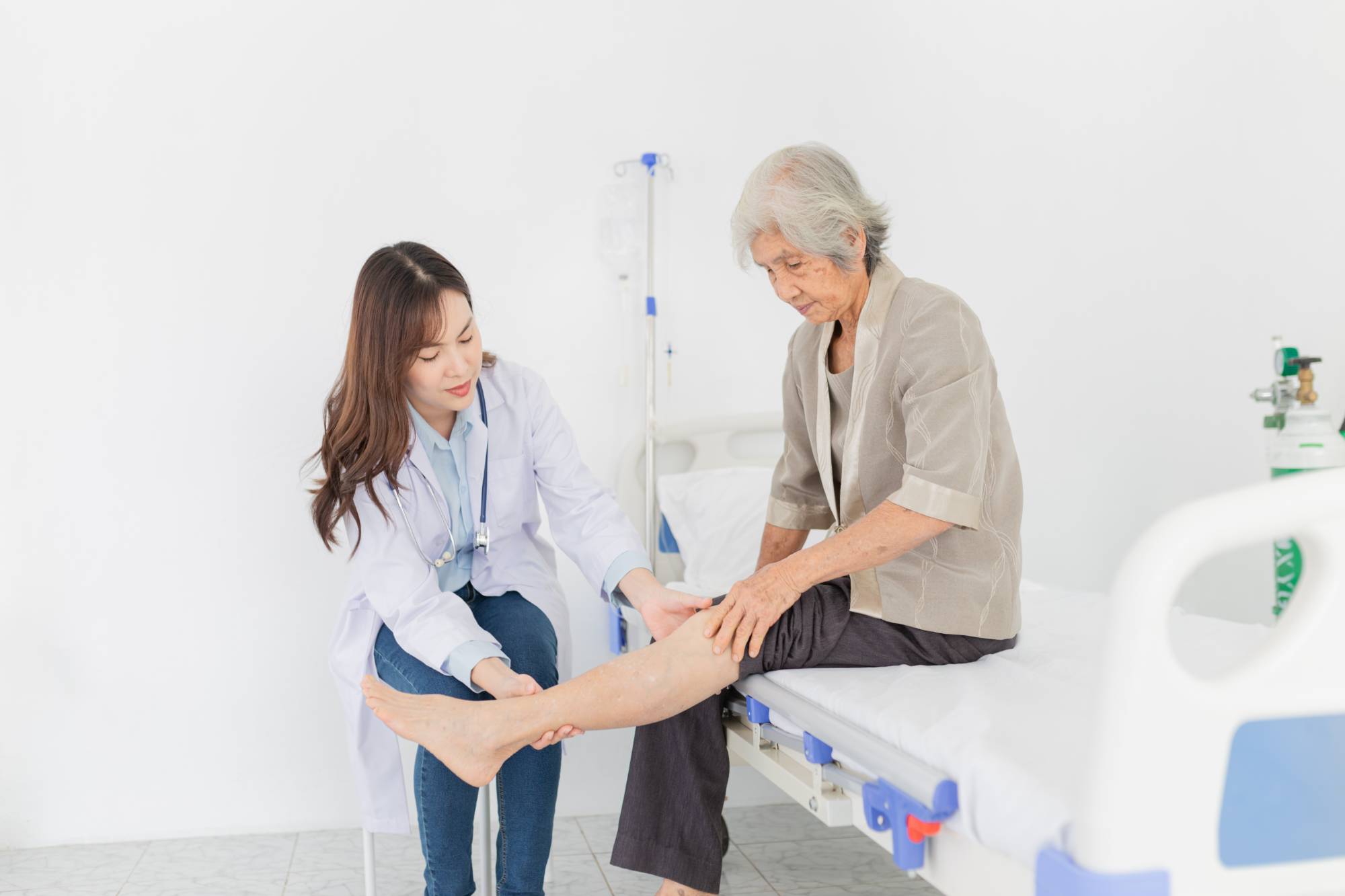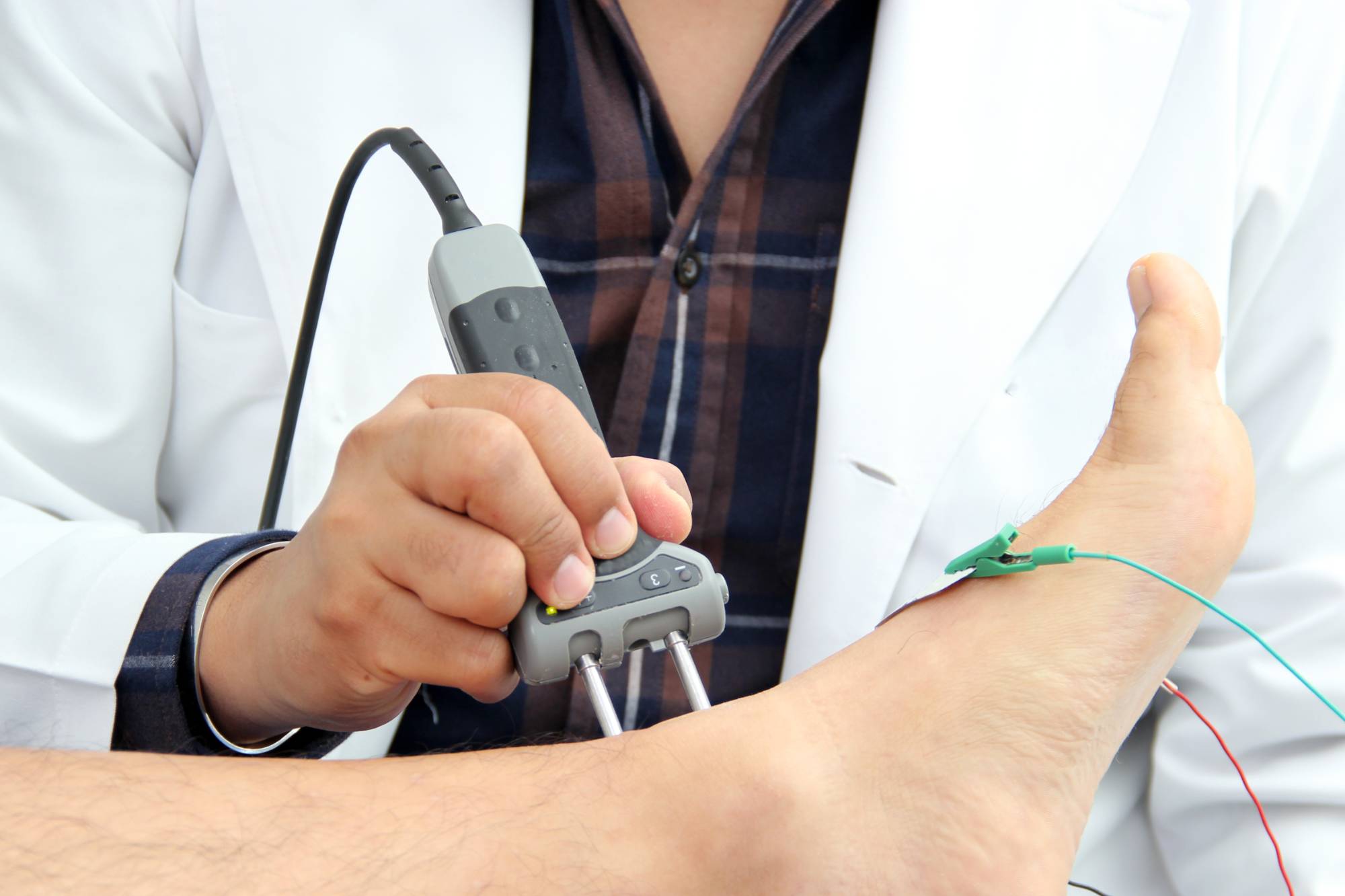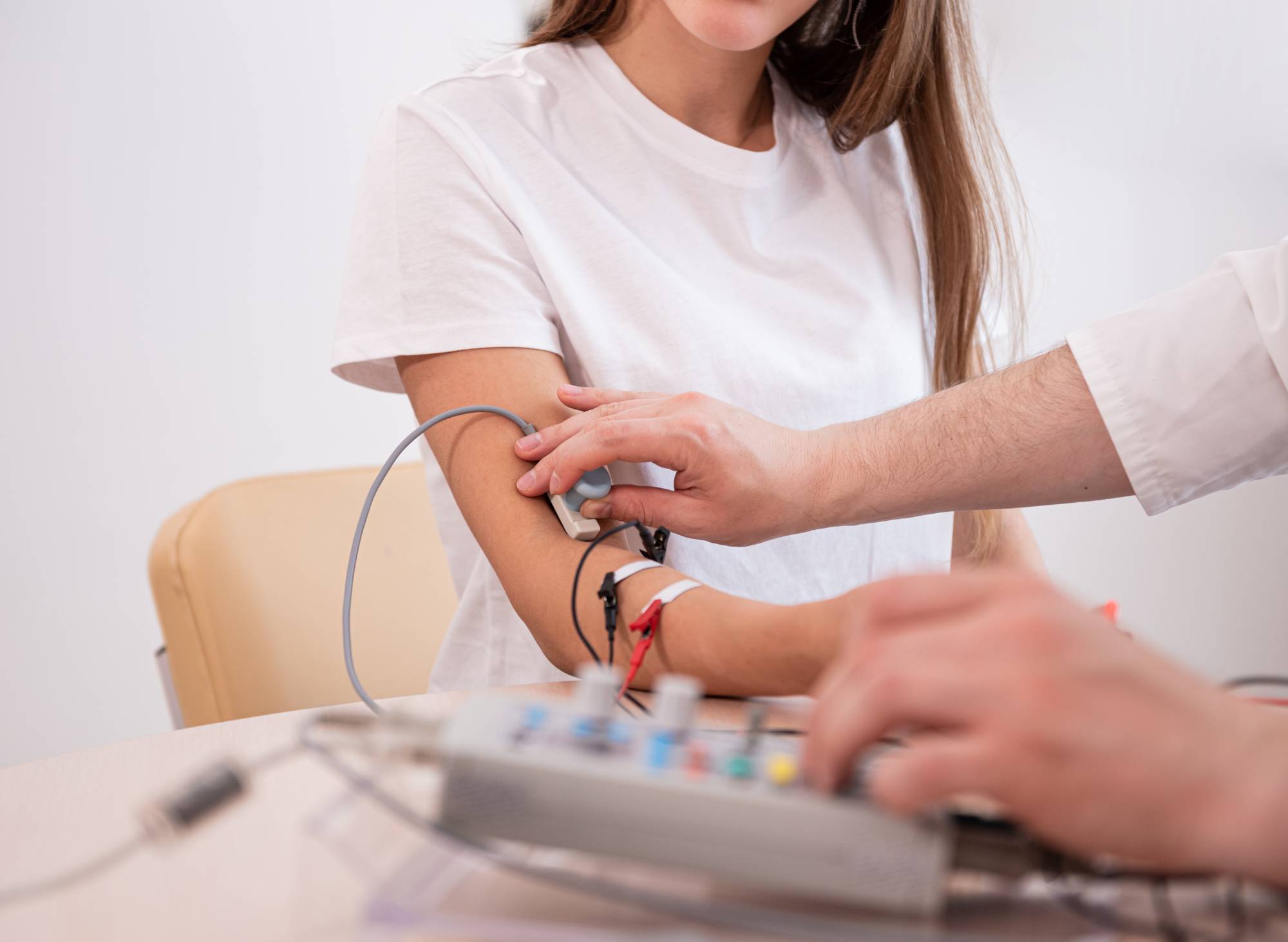Advanced nerve and muscle diagnostic testing that pinpoints exactly what’s causing your pain, numbness, or weakness.

Reviews

You’ve been dealing with numbness in your hands, shooting pain down your leg, or muscle weakness that just won’t go away. Maybe you’ve had X-rays or MRIs that didn’t show anything conclusive. That’s frustrating, but it doesn’t mean your symptoms aren’t real or treatable.
Nerve and muscle testing gives you the precise diagnosis you need. These tests measure how well your nerves conduct electrical signals and how your muscles respond. When something’s wrong with your nervous system, these tests catch it.
The difference is night and day. Instead of guessing what’s causing your symptoms, you get clear, objective data. Your doctor can see exactly which nerves aren’t working properly, how severe the problem is, and what treatment options will actually help. No more trial and error with treatments that might not address the real issue.
NY Spine Medicine has been serving the Rockaway Beach community with specialized neuromuscular diagnostics for years. Our team understands that when you’re dealing with nerve or muscle problems, you need answers fast.
We focus specifically on spine and neuromuscular conditions, which means we see these types of cases every day. We know what to look for, how to interpret complex test results, and how to explain everything in terms that make sense to you.
Located right here in Rockaway Beach, we accept most major insurance plans and work to get you scheduled quickly. When you’re dealing with concerning symptoms, waiting weeks for answers isn’t acceptable.

The testing process typically involves two main components: electromyography (EMG) and nerve conduction studies. Both are performed in the same visit and usually take about 45 minutes to an hour total.
During the nerve conduction study, small electrodes are placed on your skin over the nerves being tested. You’ll feel brief, mild electrical pulses as the equipment measures how fast and strong your nerve signals are. Most patients describe it as similar to static electricity shocks.
For the EMG portion, a thin needle electrode is inserted into specific muscles to measure their electrical activity. You’ll be asked to relax certain muscles, then contract them gently. The needle insertion feels like a small pinprick, and most people tolerate it well.
Your doctor reviews the results immediately and explains what they found. You’ll leave with a clear understanding of your diagnosis and recommended next steps. No waiting days or weeks wondering what the tests revealed.

Ready to get started?
Your nerve and muscle testing appointment includes a thorough evaluation of your specific symptoms and medical history. The testing itself covers both motor and sensory nerve function, plus muscle response patterns that reveal exactly where problems exist.
Common conditions diagnosed through these tests include carpal tunnel syndrome, ulnar neuropathy, sciatica, peripheral neuropathy, radiculopathy, and various muscle disorders. The equipment we use at NY Spine Medicine provides detailed measurements that pinpoint not just which nerves or muscles are affected, but how severe the condition is.
You receive a comprehensive report of all findings, plus clear recommendations for treatment options. Whether that means physical therapy, medication, injections, or referral to other specialists, you’ll know exactly what your next steps should be. The goal is giving you the information you need to make informed decisions about your care.

New York:
Florida:
Support